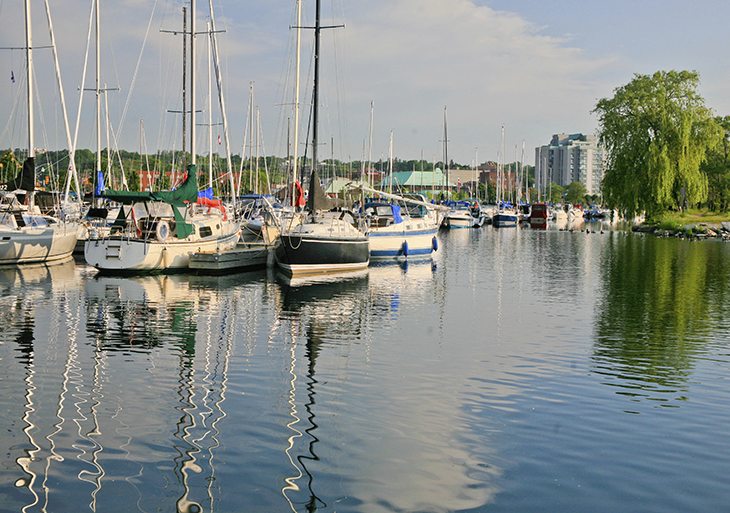Waterfront Properties Around Lake Simcoe
In this crazy real estate market where supply is low and demand is high, what are the best questions to ask yourself when looking for Waterfront Properties Around Lake Simcoe? Is the value just in the view or are there other factors at play? When you arm yourself with knowledge, you’ll know whether to write the deposit cheque or simply wait for the next opportunity before making your move.
What Factors Contribute to Value in Lakeside Properties?
As with all properties, market value is arrived at by looking at many different factors, some objective and some subjective. From both an MPAC (Municipal Property Assessment Corporation) and a real estate point of view, key factors that determine the value of recreational Waterfront Properties are the body of water your property is located on and the amount of water frontage.
Other Key Features That May Affect The Value Of Waterfront Properties Around Lake Simcoe Include:
• If the property is seasonal or water access only
• The type of shoreline it has (e.g., rocky, sandy or marshland)
• The property’s topography (e.g., steep or gentle slope down to the waterfront)
• Whether it’s an island versus a mainland property
• The water source to the structure (e.g., lake or connected to municipal water)
• The type of heating
• The predominant exposure (e.g., facing north)
• The presence of fireplaces
• If there is hydro service
• The sanitary services for the property (e.g., septic bed)
• Any secondary structures on the property (e.g., boathouses, decks and cabins).
The local real estate market also plays a big role in determining the value of a property. The current housing climate (January 2017) is one of high demand and low inventory, particularly with locations around Lake Simcoe as they are quite accessible for Toronto commuters. To date property on the west side of Lake Simcoe has increased anywhere from 11.8% to 26.4% in the last year, depending on specific location and type of property. Expanding your search to include fringe markets could potentially provide a better bang for your buck, while giving you the benefits of lakefront living.
What are the Unique Challenges and Benefits of Waterfront Properties Around Lake Simcoe?
When hunting for a waterfront property, many buyers look to the immediate perks such as the perfect sunbathing spot or the ideal place to launch a boat. While these are important and add to the enjoyment factor of the property, they can blind a buyer to some of the challenges possible.
Bylaws & Zoning – Before purchasing you should contact the local township and/or your Real Estate Agent and inquire about zoning bylaws. If you’re going to build or renovate you’ll need to know what you can and can’t do. Most of the time you are restricted by maximum lot coverage and distance from the building to the high water mark. In this day and age most municipalities have restriction regarding the environment as well. It’s their mandate to protect the environment that makes these areas so sought after. This usually means limited tree removal, fewer buildings and other man made structures within 20 meters of the shoreline, and regular monitoring of septic systems.
The MNR & Conservation Authorities – The MNR (Ministry of Natural Resources) or the local Conservation Authority could also play a role in determining what can be done at your waterfront property. Less than a year ago, feuding neighbours involved the MNR in a boathouse dispute and as a result the MNR is now requesting that cottage owners apply for a land use permit for any new dock that cast a shadow larger then 15 square meters. Similarly, the Federal Species at Risk Act plays a role, requiring that the list is updated annually, adding or downgrading plants and animals as special concern, threatened, endangered, extirpated, and extinct in Canada. These covenants supersede zoning bylaws and again aim to ensure that cottagers do not harm habitats and ecosystems. Lake or Cottage Associations will provide insight into these sorts of issues as well as provide a collective voice to cottagers in an area for environmental and planning issues.
What Information Does a Buyer Need to Know Before Putting in an Offer?
While putting in an offer on a property can be an nerve-wracking process, doing so on a waterfront property can be even more so. With so many unique elements in play, doing your due diligence will leave you protected and educated.
Request a survey – Get proof via a survey of all easements, encroachments and right of ways; it may be that you need to cross another property to access the water or your driveway. The cottage, outbuildings, driveways or boathouse may not be on the property. If there is any doubt, a survey should be obtained so it can be determined what you are buying.
Septic Systems & Water Sources – For septic, you will need to find out if it’s hooked up to the municipality or if it’s a separate septic system, when it was installed and when it was last pumped out. Again for water, it may not be hooked up to the municipality, but rather be a drilled well or pulled directly from the lake. A potability test and flow test of the water supply should be conducted prior to closing on a purchase.
Road Types – Some waterfront properties are water-access only, but most properties have some form of road access. Generally, there are three types of road access: municipal yearround roads, private year-round roads and seasonal roads. Depending on the type of road, access may be limited by season or there may be an additional cost to maintain the road.
Road Shore Allowance – Many waterfront properties in Ontario have a Shore Road Allowance. This is a 66-foot wide strip of land running along the shoreline of the lake. In most cases, this land still belongs to the crown. When buying waterfront property, ask whether the shoreline is “closed” or “open”; a closed road allowance does not have the risk of actually being developed as a road. In addition, if a building sits close to the water it may be encroaching on the Shore Road Allowance, and you may want to consider whether it is actually part of the property or on crown land. Some municipalities will let you buy the road shore allowance based on a cost per square foot.
Know the rental market – If you are buying a seasonal property and considering renting, establishing how easy it is to rent the property and what you can realistically expect for a rental fee will benefit you when determining your finances.
While the items listed above are specific to waterfront properties on Lake Simcoe, there are other things to consider before and during a home purchase. Visit out Frequently Asked Questions page to find out more.
Understandably there is a lot to consider when purchasing a lakeside home, but it can be one of the most significant purchases in your life. It is worth the extra research and upfront costs to ensure your investment will be enjoyed for generations to come.
Thinking of buying a waterfront property? Start your search right now or connect with us for a more personalized experience.



Lajos Kellner says:
Hello, who could I use to advocate for me for the building allowances and property coverage?
The Fournier Team says:
Please reach out to us via email or phone so I can get the details surrounding your question